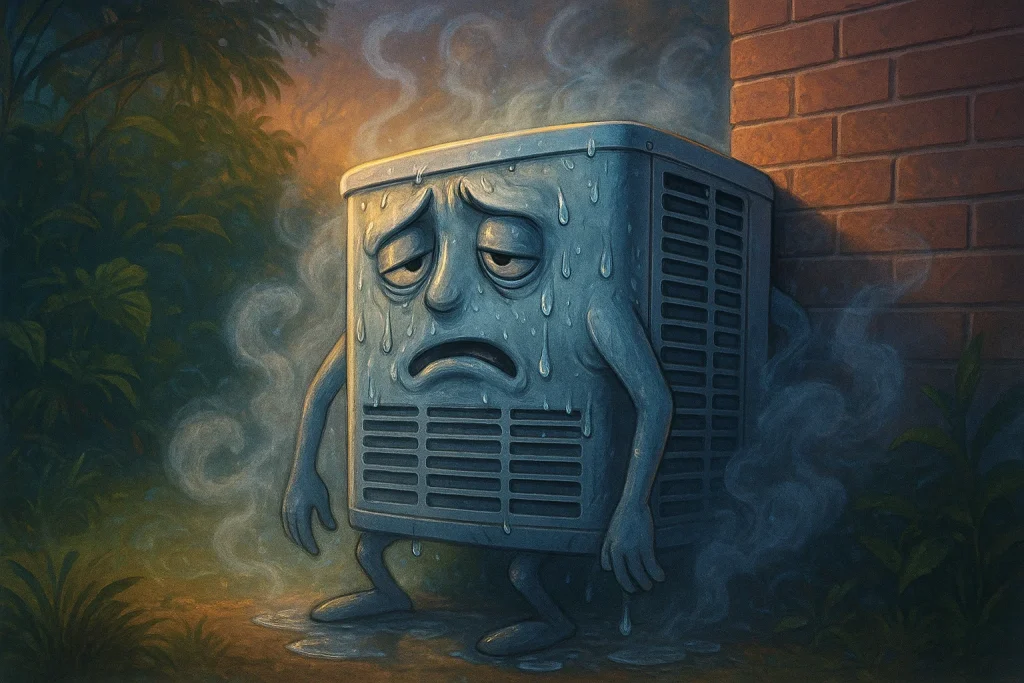August in Wisconsin often feels like stepping into a steam room—sticky, sweaty, and just plain uncomfortable. Unfortunately, your air conditioner feels the strain of that humidity just as much as you do. When moisture levels climb, your AC has to work overtime, and without the right support, its performance suffers. That’s why many homeowners explore adding a whole-home solution such as a dehumidifier in Janesville, WI, to give their system some much-needed relief.

Why Humidity Overloads Your AC
Your AC doesn’t just cool the air—it also removes moisture. In fact, dehumidification plays a significant role in maintaining a comfortable home. However, when humidity levels rise, your system may struggle to keep up. Warm, moist air is harder to cool, and your AC may run longer cycles while still leaving your home feeling damp. This added workload not only affects comfort but can also shorten the lifespan of your equipment.
Common Late-Summer AC Problems
As Wisconsin humidity peaks in August, certain air conditioning issues tend to show up more often. Here’s what you may notice:
- Frozen Coils – High humidity means your AC is pulling extra moisture from the air. If airflow is restricted by dirt or blocked vents, the coil can freeze, stopping cooling altogether.
- Clogged Filters – The harder your system works, the more quickly filters trap dust and moisture. A dirty filter restricts airflow and can cause breakdowns.
- Worn Capacitors – When your AC is constantly cycling in humid weather, electrical parts like capacitors wear out faster, leading to sudden failures.
- Low Refrigerant – If refrigerant levels are even slightly off, the AC can’t absorb enough heat or moisture, which makes humidity problems worse.
These issues don’t just mean reduced cooling power—they can drive up energy bills, increase wear and tear, and make your home feel muggy and uncomfortable.
Why a Whole-House Dehumidifier Helps
A whole-home dehumidifier works alongside your air conditioner, targeting the excess moisture in your air directly. This takes pressure off your AC, allowing it to focus on cooling efficiently while the dehumidifier handles the moisture. The result? Lower indoor humidity, improved comfort, better energy efficiency, and less risk of the AC overworking itself in the late-summer heat.
When AC Issues Worsen Humidity Problems
Sometimes, the problem isn’t just the humidity—it’s that your system isn’t equipped to deal with it. Low refrigerant, a dirty coil, or a failing blower can reduce your AC’s ability to dehumidify. Instead of removing moisture, the system may blow cool but clammy air, leaving your home uncomfortable and potentially encouraging mold growth.
Quick Homeowner Humidity Checklist
To stay ahead of late-summer humidity headaches, keep this list in mind:
- Change air filters every 1–3 months.
- Keep vents and registers clear of furniture or rugs.
- Watch for ice buildup on your AC coil or refrigerant lines.
- Listen for hard starts or frequent cycling, signs of capacitor strain.
- Ask about whole-home dehumidifier installation for lasting relief.
Stay Cool and Comfortable
Wisconsin summers shouldn’t leave you sticky, sweaty, and stressed inside your own home. By addressing humidity challenges and considering a whole-house dehumidifier, you can give your AC the backup it needs to keep your family cool and comfortable—even on the muggiest August days.
You can always count on 24-Hour Home Comfort Services, your heating and cooling specialists.
